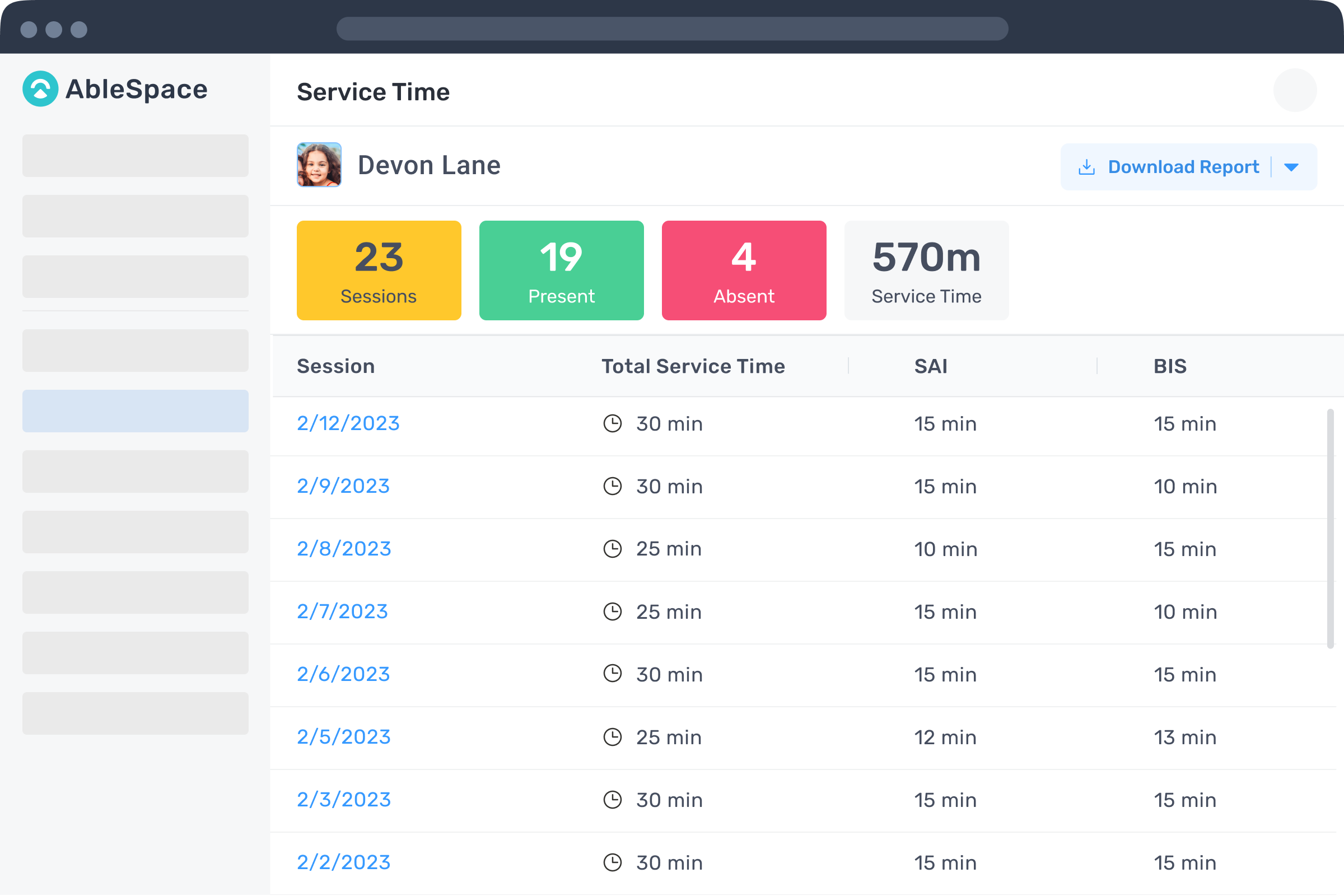Individualized Education Programs (IEPs) ensure that students with special needs receive the support and services they require to thrive academically and socially.
A significant aspect of managing IEPs is tracking service minutes accurately.
These service minutes represent the time devoted to various interventions, accommodations, or therapies, to address the unique needs of special needs students in schools.
Teachers or therapists may have several students with IEPs, each requiring different services.
So, tracking IEP service minutes while juggling multiple schedules can be time-consuming.
Unexpected interruptions or schedule changes throughout the day can also disrupt the planned IEP service time and make accurate tracking difficult.
Here in this post, we will look at some of the most common ways school-based therapists, special education teachers, and paraprofessionals can record and track IEP service minutes.
1. Dedicated IEP Tracking Apps
Specialized apps for tracking IEPs offer tailored features to meet the needs of special education professionals.
These apps include modules for managing IEP goals, monitoring progress, and, most importantly, tracking service minutes.
AbleSpace, for instance, provides easy-to-use features for recording and tracking service minutes, and other IEP data, to help schools achieve compliance with IEP mandates.

You can utilize this cutting-edge special education IEP software to streamline workflows, enhance team members' communication, and improve service minute tracking accuracy. There’s a one-month free-trial available.
2. Spreadsheet Templates for Tracking IEP Service Minutes
Many special education teachers use spreadsheets (Microsoft Excel or Google Sheets) for tracking service minutes.
IEP service minute tracking templates are designed specifically for tracking time. Teachers can further personalize them to fit the unique requirements of their students' IEPs.
Although readily available online, such tracking sheets are prone to error to some extent. Also, teachers may have to rely on different sheets for recording IEP goals and other data. So, while this IEP service minute tracking method is better than paper logs, teachers can save more time and effort if they switch to a dedicated IEP tracking app. .
3. Using Digital Calendars for IEP Service Minute Tracking
Google Calendar or Microsoft Outlook can also be used to schedule and track IEP service minutes.
You can create separate calendars for each student and populate them with scheduled service sessions.
imply ‘start’ and ‘stop’ a timer within the calendar event to track the session duration.
These calendar tools are available for free. However, teachers and therapists may find it difficult to maintain consistency and accuracy across multiple calendars, particularly when managing a large caseload of students or handling complex scheduling arrangements.
4. Using Visual Aids as a Service Minute Tracking Method
Using visual aids for tracking IEP service minutes can be a good strategy when catering to the needs of younger students or those who thrive in visual learning environments.
You can create visual representations, like charts or graphs to offer students a tangible and engaging way to monitor their progress.
When you involve young students in this process, you essentially encourage them to actively participate in their learning journey.
Whether coloring in sections of a graph or marking off completed tasks, visual aids convert the tracking process into an interactive and rewarding experience for students.
However, the challenge lies in ensuring that the visual representations are engaging and accurately reflect the progress made; they should provide a clear and encouraging roadmap for students.
5. Daily Logs or Journals
Keeping a daily log or journal to keep track of IEP service minutes is a conventional method that was widely in use before new, more efficient tracking methods became popular.
In this case, teachers, therapists, or SpED aides need to consistently maintain written records of the activities and the corresponding time spent on each task.
This method does ensure detailed documentation and serves as a viable resource for tracking progress, identifying trends, and making informed decisions during IEP meetings.
But, it's highly time consuming. But, traditional paper logs or planners for tracking minutes are prone to errors, misplacement, and difficulty in data analysis.
What are some effective tips for effective documentation of IEP Service Minutes?
1. Be Consistent
All IEP team members should establish specific protocols and procedures to maintain consistency in documenting service minutes.
Well defined procedures help ensure clarity, accuracy, and reliability in the documentation process.
2. Record IEP Service Minute Data in Real-Time
Record service minutes immediately after the session, whenever possible, to minimize the risk of forgetting or inaccurately recalling details later.
Real-time documentation ensures accuracy and prevents errors. With advanced special education software like AbleSpace, it takes less than a second to record service minutes for a student. So, you or a paraprofessional can easily record IEP service minutes in real time.
3. Include Relevant Details
Document the duration of each service session, the specific activities conducted, and any notable observations or outcomes.
Detailed documentation offers valuable insights into student progress and guides future instructional decisions.
4. Review and Verify
Regularly review and verify service minute documentation to identify discrepancies or inconsistencies.
Promptly addressing errors ensures data integrity and compliance with special education laws.
5. Communicate Effectively
Encourage open communication among IEP team members regarding documentation of service minutes.
Clarify roles and responsibilities, address concerns or questions, and collaborate to ensure accurate and comprehensive documentation.




